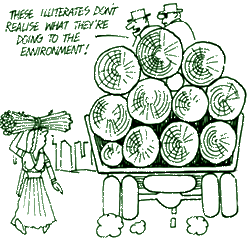Debunking the Top 10 Myths of the Keto Diet | fad diet, Keto diet, ketosis and m…
Debunking the Top 10 Myths of the Keto Diet
The Keto diet has taken the world by storm, promising transformative weight loss results. But with its rise in popularity, a slew of myths has emerged, leaving many confused and overwhelmed. If you’re considering the Keto path to shed those extra pounds, it’s crucial to separate fact from fiction. Let’s dive deep into the top ten myths surrounding the Keto diet.
In your Keto journey, it’s essential to make informed choices. For those eager to embark on this transformative path, check out these Keto-friendly products to kickstart your journey.
Myth #1: The Keto Diet Is All About Protein
Contrary to popular belief, the Keto diet isn’t about loading up on protein. It’s a high-fat, low-carb regimen with a moderate protein intake. This balance is vital to push your body into ketosis, where it uses fat for energy instead of carbs.
Myth #2: Eating Fat Melts Away Body Fat
It’s a misconception that simply eating fat will melt away body fat. The Keto diet emphasizes fat to ensure your body has an energy source in the absence of carbs. It’s the state of ketosis that encourages your body to tap into its fat reserves.
Myth #3: Keto Equals Ketoacidosis
Many confuse ketosis with ketoacidosis, a dangerous condition. While both involve raised ketone levels, ketoacidosis is a medical emergency seen mainly in type 1 diabetics. In contrast, ketosis is a natural state the body enters when food intake is low.
Myth #4: Saturated Fat Is a Heartbreaker
Recent research has debunked the myth that saturated fat is the sole villain for heart health. While it’s essential to choose healthy fats on the Keto diet, factors like inflammation, stress, and overall diet quality are equally crucial.
Myth #5: Keto Leads to Nutrient Deficiency
With proper planning, the Keto diet can be nutritionally rich. Prioritize whole foods, leafy greens, and quality protein sources to ensure a balanced diet.
Myth #6: Keto = Constipation
While some experience constipation when transitioning to Keto, it’s not a given. Stay hydrated and include fiber-rich low-carb veggies to keep things moving.
Myth #7: Keto Is a Short-Term Diet
Many believe Keto is a quick fix. However, numerous individuals have adopted it as a long-term lifestyle, reaping sustained benefits like improved energy and mental clarity.
Myth #8: Keto Is Expensive
While some Keto products can be pricey, many affordable options fit the diet perfectly. Planning and smart shopping can make Keto budget friendly.
Myth #9: You Can’t Exercise on Keto
Another misconception is that Keto saps your energy, making exercise impossible. On the contrary, once adapted, many find they have more stamina and endurance on Keto.
Myth #10: Keto Is Just Another Fad Diet
With its roots in medical research and countless success stories, Keto is here to stay. It’s not just another fleeting trend but a scientifically backed approach to health and weight loss.
Benefits of the Keto Diet
- Weight Loss: One of the most celebrated benefits of the Keto diet is weight loss. By burning fat as a primary energy source, many individuals find it easier to shed those extra pounds.
- Enhanced Energy: Once past the initial transition phase, many Keto dieters report a steady surge in their energy levels, without the crashes associated with high-carb diets.
- Mental Clarity: The brain loves ketones! Many people on Keto report enhanced focus and clarity, making it easier to tackle daily tasks.
- Stable Blood Sugar Levels: By reducing carbohydrate intake, the Keto diet can help stabilize blood sugar levels, which is especially beneficial for those with type 2 diabetes.
-
Improved Heart Health: Contrary to popular belief, the Keto diet can improve heart health by increasing the levels of ‘good’ HDL cholesterol and reducing ‘bad’ LDL cholesterol.
Getting Started with Keto
- Understand the Basics: Before diving in, understand what Keto is all about. It’s a high-fat, low-carb diet that shifts your body into burning fat for energy.
- Plan Your Meals: Start by planning your meals. Focus on high-fat, low-carb foods. Include plenty of vegetables, lean meats, and healthy fats.
- Stay Hydrated: Drink plenty of water. As your body transitions into ketosis, it’s essential to stay hydrated to help flush out toxins.
- Watch Out for the ‘Keto Flu’: As you start, you might experience the ‘Keto flu’ – a group of symptoms that can include headaches, fatigue, and irritability. It’s a sign your body is adjusting, and it’s temporary.
- Supplement Wisely: Consider supplements to ensure you’re getting all the essential nutrients. Magnesium, Vitamin D, and Omega-3s are good places to start.
- Explore Keto-Friendly Products: To make your journey smoother, explore Keto-friendly products on Nashua Nutrition. From snacks to meal replacements, they have a range of products to keep you on track.
Remember, diets aren’t universal. Your health conditions, goals, and individual needs dictate what’s best for you. Always consult with a healthcare professional before making dietary changes.
Stay informed, stay inspired, and here’s to a healthier you!
← Previous Post
Next Post →





































